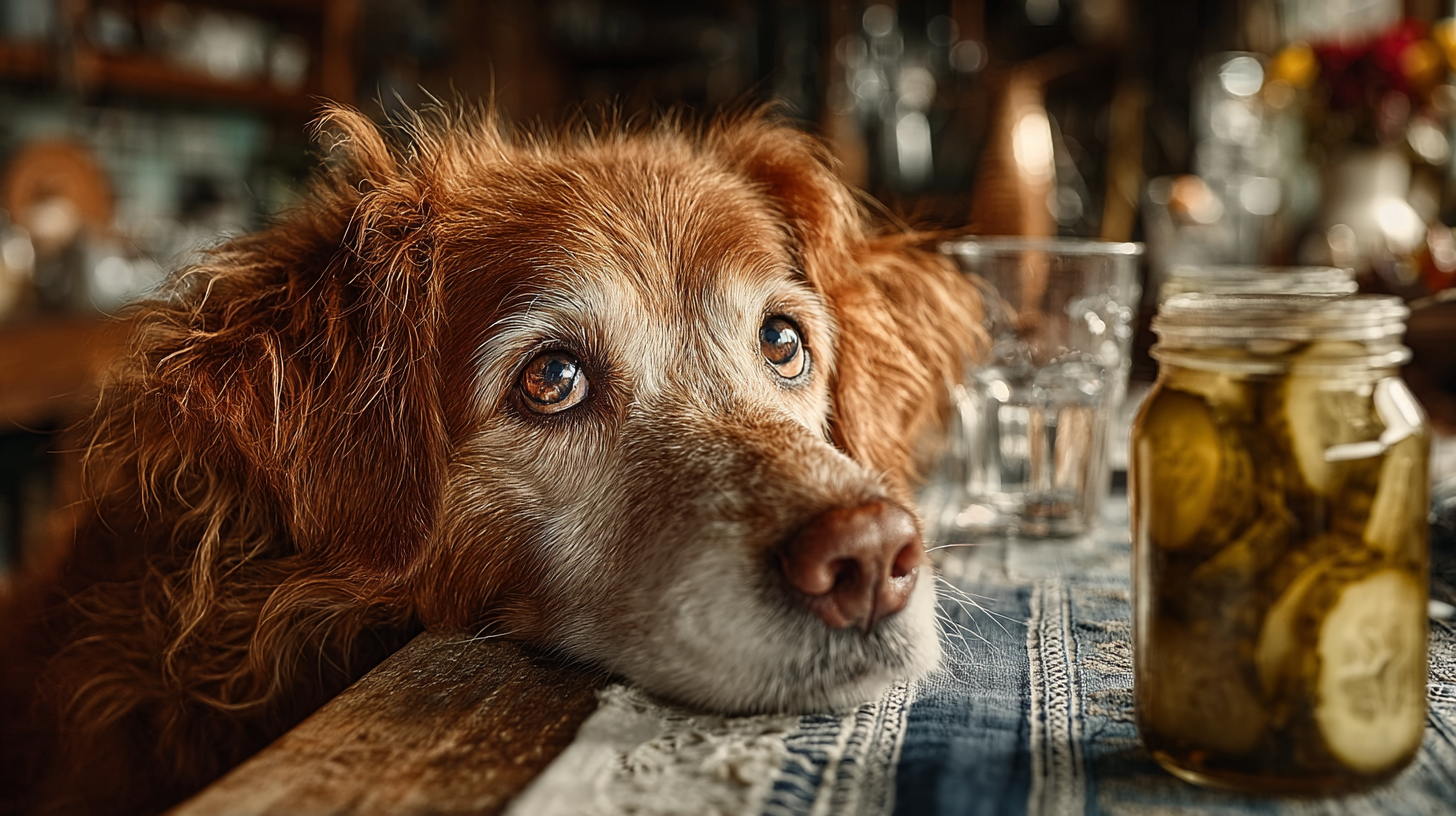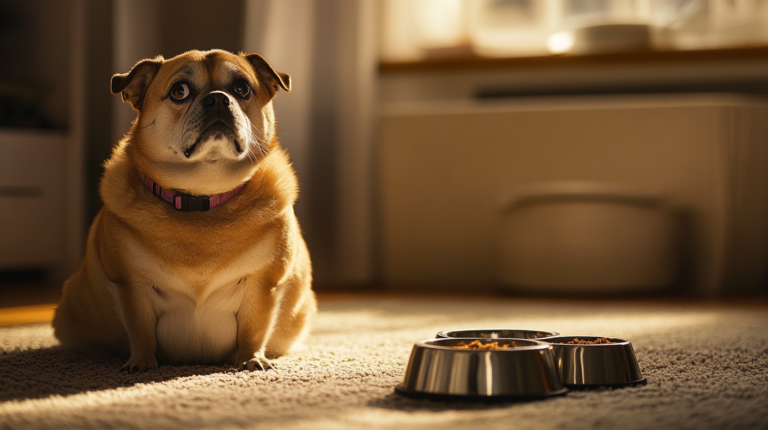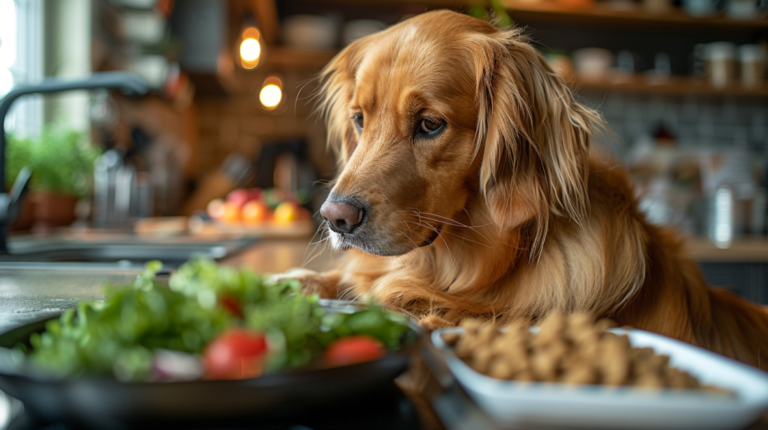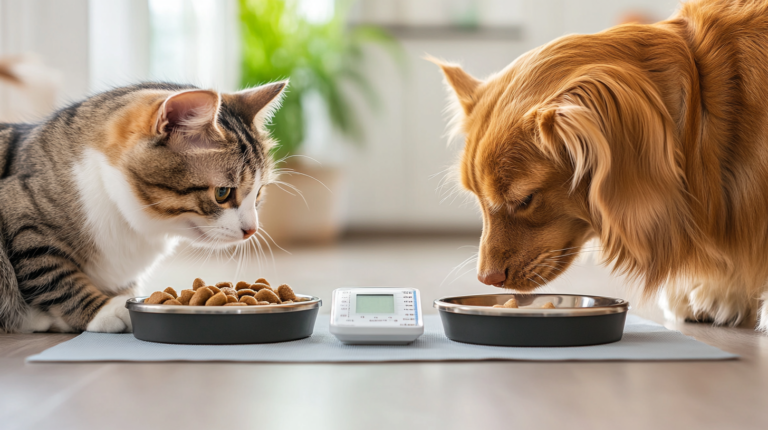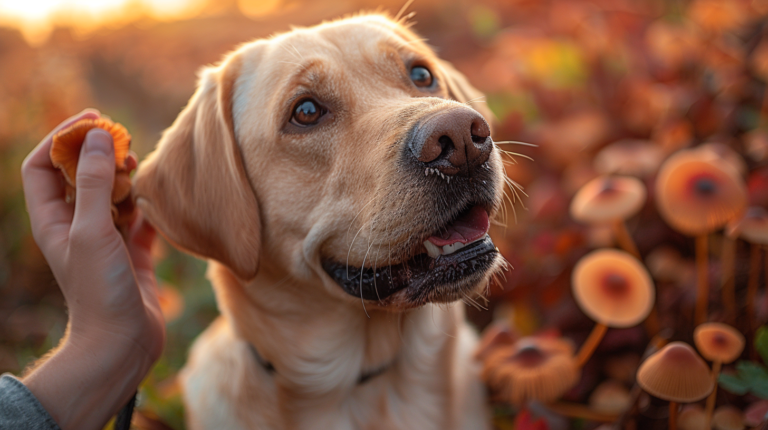Can dogs have pickles safely? Discover 3 dangerous health risks, sodium poisoning symptoms, and safer alternatives for your furry friend. Expert pet care guide.
Table of Contents
Picture this: you’re enjoying a delicious sandwich with pickles when your beloved canine companion gives you those irresistible puppy dog eyes, begging for a taste. Before you give in to their adorable plea, you might wonder, Can dogs have pickles? While it’s natural to want to share our favorite foods with our four-legged family members, the answer isn’t as straightforward as you might think.
The short answer is that while pickles aren’t technically toxic to dogs, they pose significant health risks that make them unsuitable for canine consumption. Most commercial pickles contain dangerously high levels of sodium, harmful preservatives, and potentially toxic seasonings that can seriously compromise your dog’s health. Understanding these risks is crucial for every responsible pet owner who wants to keep their furry friend safe and healthy.
In this comprehensive guide, we’ll explore the three most serious health risks associated with feeding pickles to dogs, examine the specific ingredients that make pickles problematic, and provide you with safer alternatives to satisfy your dog’s curiosity for new flavors. Whether you’re a new pet parent or an experienced dog owner, this information will help you make informed decisions about your pet’s diet and overall wellbeing.
Understanding What Makes Pickles Dangerous for Dogs
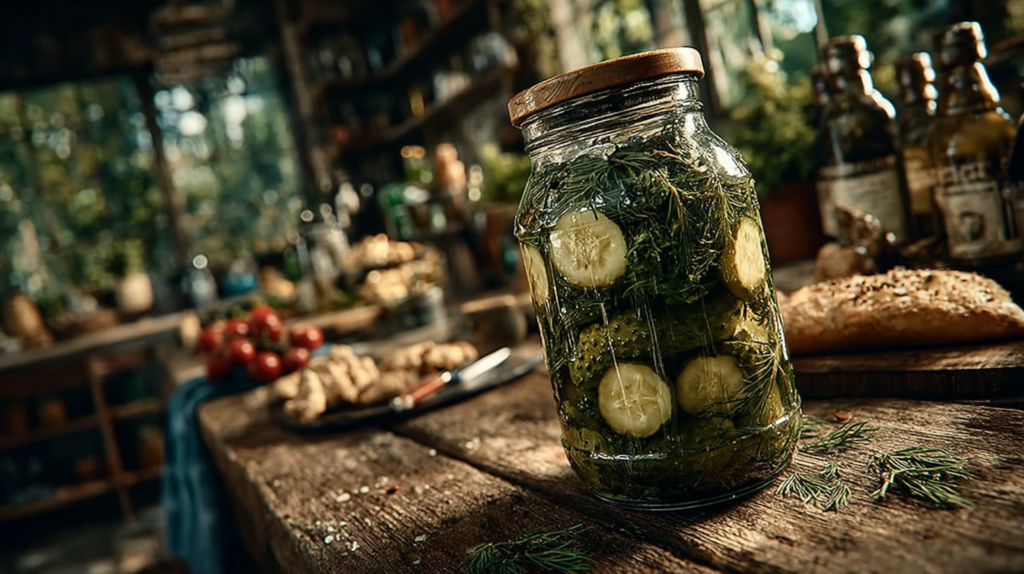
The Pickling Process and Its Impact on Canine Health
To understand why pickles pose risks to dogs, it’s essential to examine the pickling process itself. Pickles are cucumbers that have been preserved in a brine solution containing high concentrations of salt, vinegar, and various spices. This preservation method, while creating the tangy flavor humans love, transforms an otherwise dog-friendly vegetable into a potentially harmful snack.
The pickling process typically involves:
- High-sodium brine solutions (often containing 2-3% salt by weight)
- Acidic vinegar that can disrupt digestive pH balance
- Garlic and onion powder (toxic to dogs in any amount)
- Artificial preservatives like sodium benzoate
- Various spices including dill, mustard seed, and peppercorns
Each of these components can contribute to health problems in dogs, making even small amounts of pickles potentially problematic for our canine companions.
Commercial vs. Homemade Pickles: Are Any Safe?
Many pet owners assume that homemade pickles might be safer than store-bought varieties, but this isn’t necessarily true. While you may have more control over ingredients in homemade pickles, the fundamental issues remain:
Commercial Pickles Concerns:
- Mass-produced using maximum preservatives
- Often contain artificial colors and flavors
- Higher sodium content for extended shelf life
- May include high fructose corn syrup
Homemade Pickles Concerns:
- Still require high salt content for proper preservation
- Often use traditional recipes with garlic and onions
- Vinegar acidity remains problematic
- Risk of inadequate preservation leading to bacterial growth
The reality is that the pickling process itself, regardless of whether it’s commercial or homemade, creates an environment that’s unsuitable for canine consumption.
Health Risk 1: Sodium Poisoning and Electrolyte Imbalance
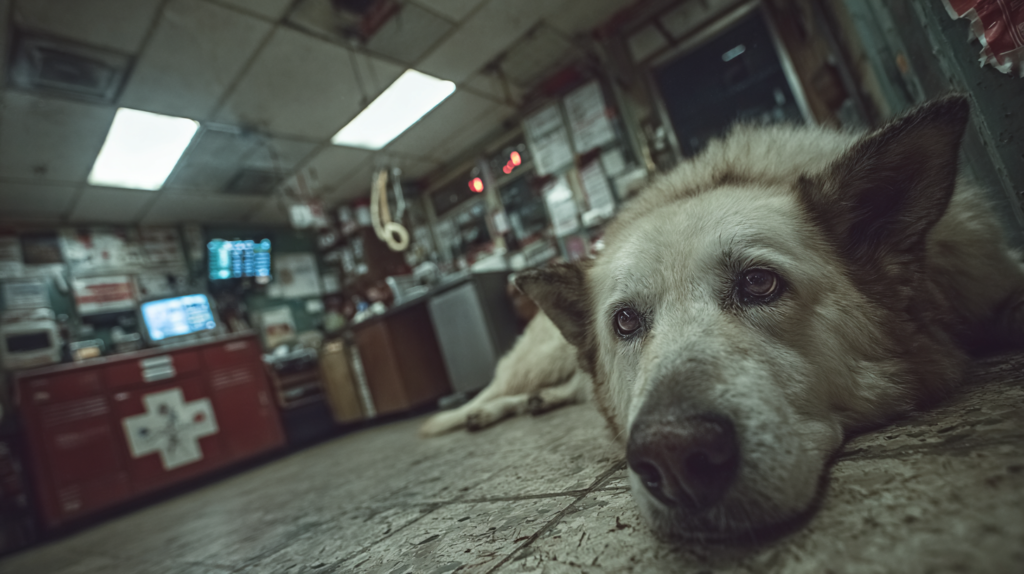
Understanding Sodium Toxicity in Dogs
The most immediate and serious risk of feeding pickles to dogs is sodium poisoning, also known as salt toxicity or hypernatremia. Dogs have a much lower tolerance for sodium than humans, and what might seem like a small amount of pickle can contain dangerous levels of salt for our canine friends.
To put this in perspective:
- Average dog’s daily sodium requirement: 13mg per pound of body weight
- Typical pickle sodium content: 200-400mg per medium pickle
- Toxic threshold: 2-3 grams of salt per kilogram of body weight
This means that a single pickle could provide several days’ worth of sodium for a small dog, potentially pushing them into dangerous territory.
Symptoms of Sodium Poisoning in Dogs
Recognizing the signs of sodium poisoning is crucial for every dog owner. Symptoms can appear within hours of consumption and may include:
Early Symptoms (2-6 hours):
- Excessive thirst (polydipsia)
- Increased urination (polyuria)
- Loss of appetite
- Lethargy and weakness
- Nausea and drooling
Advanced Symptoms (6-24 hours):
- Vomiting and diarrhea
- Difficulty walking or coordination problems
- Muscle tremors or seizures
- Rapid breathing and elevated heart rate
- Confusion or disorientation
Severe Cases (24+ hours):
- Coma or loss of consciousness
- Kidney failure
- Brain swelling (cerebral edema)
- Death in extreme cases
Case Study: The Dangers of Just One Bite
Dr. Sarah Mitchell, a veterinary toxicologist at the Animal Emergency Center, shares a concerning case: We treated a 15-pound Cavalier King Charles Spaniel who consumed three pickle spears during a family barbecue. Within four hours, the dog was showing signs of severe dehydration and neurological symptoms. It took 48 hours of intensive fluid therapy to stabilize the patient.
This case illustrates how quickly sodium toxicity can develop and emphasizes that there’s no safe amount of pickles for dogs.
Long-term Effects of Excessive Sodium Intake
Even if your dog doesn’t experience acute sodium poisoning, regular consumption of high-sodium foods like pickles can lead to chronic health problems:
- Hypertension (high blood pressure)
- Increased risk of heart disease
- Kidney damage and potential failure
- Electrolyte imbalances affecting muscle and nerve function
- Increased risk of bladder stones
Health Risk 2: Toxic Seasonings and Additives
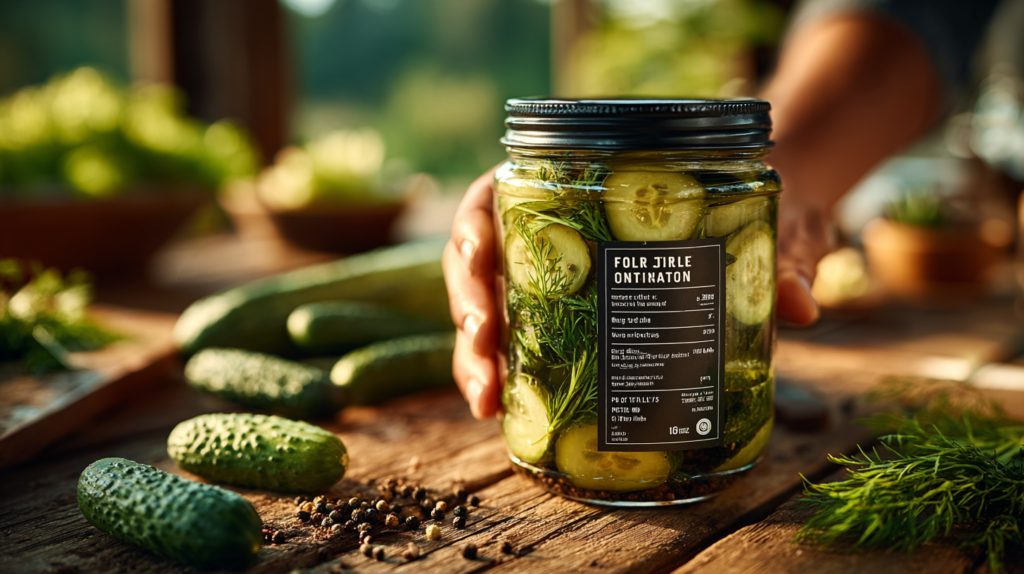
Garlic and Onion: Silent Killers
Many pickle recipes include garlic and onion powder, both of which are highly toxic to dogs. These ingredients belong to the Allium family and contain compounds called thiosulfates, which dogs cannot properly metabolize.
Why Garlic and Onions Are Dangerous:
- Cause oxidative damage to red blood cells
- Lead to hemolytic anemia (destruction of red blood cells)
- Can cause organ failure in severe cases
- Toxicity is cumulative, meaning small amounts over time can be dangerous
Symptoms of Allium Toxicity:
- Weakness and lethargy
- Pale gums and tongue
- Rapid breathing
- Dark-colored urine
- Collapse in severe cases
According to the American Kennel Club, as little as 15-30 grams of onion per kilogram of body weight can cause toxicity in dogs, and garlic is even more potent.
Other Problematic Pickle Ingredients
Beyond garlic and onions, pickles often contain several other ingredients that can harm dogs:
Artificial Preservatives:
- Sodium benzoate: Can cause hyperactivity and digestive upset
- Potassium sorbate: May trigger allergic reactions
- Calcium chloride: Can cause gastrointestinal irritation
Spices and Seasonings:
- Mustard seed: Can cause digestive inflammation
- Dill: Generally safe in small amounts but can cause stomach upset in large quantities
- Peppercorns: Can irritate the digestive tract
- Turmeric: While beneficial in small amounts, can cause stomach upset in large quantities
Artificial Colors and Flavors:
- Can trigger allergic reactions
- May cause behavioral changes
- Often linked to digestive sensitivities
The Cumulative Effect Problem
One of the most concerning aspects of feeding dogs foods with multiple harmful ingredients is the cumulative effect. While your dog might not show immediate symptoms from a small amount of pickles, repeated exposure to these toxins can build up in their system, potentially causing serious health problems over time.
Health Risk 3: Gastrointestinal Distress and Digestive System Damage
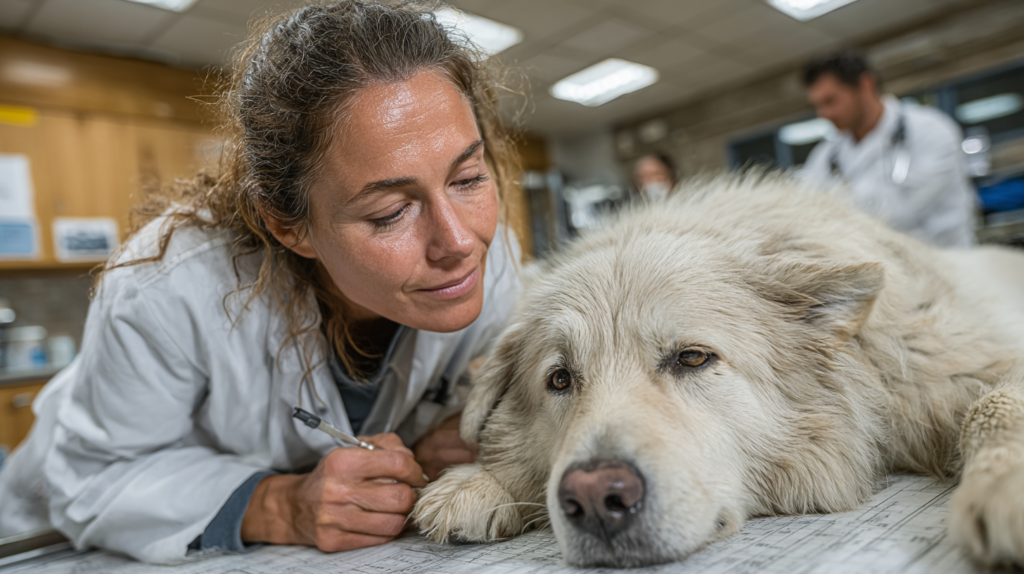
Acid Levels and Canine Digestion
Pickles are highly acidic due to the vinegar used in the brining process, typically having a pH level between 3.5 and 4.0. While dogs can handle some acidity in their diet, the concentrated acid levels in pickles can disrupt their digestive system’s natural pH balance.
How Excessive Acidity Affects Dogs:
- Disrupts beneficial gut bacteria
- Can cause stomach ulcers with repeated exposure
- Leads to inflammation of the digestive tract
- May trigger acid reflux and heartburn
- Can interfere with nutrient absorption
Immediate Gastrointestinal Symptoms
When dogs consume pickles, they often experience immediate digestive distress, including:
Common Symptoms:
- Vomiting (often within 30 minutes to 2 hours)
- Diarrhea or loose stools
- Excessive gas and bloating
- Stomach pain (indicated by hunched posture, whining, or reluctance to move)
- Loss of appetite
- Excessive drooling
More Severe Reactions:
- Blood in vomit or stool
- Severe dehydration from fluid loss
- Electrolyte imbalances
- Pancreatitis (inflammation of the pancreas)
Long-term Digestive Health Consequences
Regular consumption of pickles can lead to chronic digestive issues that may persist long after the initial consumption:
Chronic Conditions:
- Gastritis: Chronic inflammation of the stomach lining
- Gastroesophageal reflux disease (GERD): Chronic acid reflux
- Inflammatory bowel disease (IBD): Long-term intestinal inflammation
- Pancreatitis: Recurring pancreatic inflammation
- Malabsorption syndrome: Difficulty absorbing nutrients from food
Impact on Gut Microbiome
Recent veterinary research has highlighted the importance of maintaining a healthy gut microbiome in dogs. The high salt content and acidity in pickles can significantly disrupt this delicate bacterial balance:
- Reduction in beneficial bacteria like Lactobacillus and Bifidobacterium
- Overgrowth of harmful bacteria such as Clostridium
- Decreased production of beneficial short-chain fatty acids
- Compromised immune system function (70% of immune cells are in the gut)
- Increased susceptibility to infections and allergies
Additional Health Concerns and Risk Factors
Choking Hazards and Physical Risks
Beyond the chemical dangers, pickles present physical risks to dogs:
Size and Shape Concerns:
- Whole pickles can be choking hazards, especially for small dogs
- The cylindrical shape can become lodged in the throat
- Large pickle pieces may cause intestinal blockages
- The firm texture requires significant chewing, increasing choking risk
Recommended Safety Measures: If your dog accidentally consumes pickles, monitor them closely for signs of choking or difficulty swallowing. Never attempt to induce vomiting without consulting a veterinarian first.
Breed-Specific Sensitivities
Some dog breeds are particularly susceptible to the harmful effects of pickles:
High-Risk Breeds:
- Small breeds (Chihuahuas, Yorkshire Terriers, Maltese): Lower body weight means higher concentration of toxins
- Brachycephalic breeds (Bulldogs, Pugs, Boston Terriers): Already compromised breathing can be worsened by sodium-induced swelling
- Senior dogs: Reduced kidney and liver function makes toxin processing more difficult
- Dogs with existing health conditions: Heart disease, kidney disease, or diabetes increases risk
Age-Related Considerations
Puppies (Under 12 months):
- Developing kidneys are less efficient at processing excess sodium
- Smaller body size means higher toxin concentration
- Developing immune systems are more susceptible to harmful bacteria
Senior Dogs (7+ years):
- Reduced organ function affects toxin elimination
- Higher likelihood of existing health conditions
- Medications may interact with pickle ingredients
Safe Alternatives to Pickles for Dogs
Healthy Vegetable Options
Instead of sharing pickles with your dog, consider these safe and nutritious alternatives:
Cucumber (Fresh):
- Low in calories and high in water content
- Good source of vitamins K and C
- Natural breath freshener
- Should be served plain, without salt or seasonings
Carrot Sticks:
- Excellent source of beta-carotene and fiber
- Natural dental chew that helps clean teeth
- Low in calories, making them ideal for overweight dogs
- Can be served raw or lightly steamed
Green Beans:
- High in fiber and low in calories
- Good source of vitamins A, C, and K
- Can help dogs feel full without adding excess calories
- Should be served plain, without salt or butter
Bell Peppers:
- Rich in vitamins A and C
- Natural antioxidants support immune system
- Sweet flavor appeals to many dogs
- Remove seeds and serve in small pieces
Fruit Alternatives
Apple Slices (seedless):
- Natural sweetness satisfies treat cravings
- High in fiber and vitamin C
- Natural teeth-cleaning properties
- Always remove seeds and core before serving
Blueberries:
- Packed with antioxidants and vitamins
- Small size makes them perfect training treats
- May help support cognitive function
- Can be served fresh or frozen
Commercial Dog Treats
If you prefer convenient options, look for commercial treats that mimic the crunch and satisfaction of pickles:
Freeze-Dried Vegetable Treats:
- Made from single ingredients
- Retain nutritional value without harmful additives
- Available in various vegetable flavors
- Long shelf life and convenient storage
Dehydrated Sweet Potato Chews:
- Natural sweetness appeals to dogs
- High in fiber and vitamins
- Satisfying chewy texture
- No artificial preservatives or additives
What to Do If Your Dog Eats Pickles
Immediate Response Steps
If your dog has consumed pickles, follow these immediate steps:
Step 1: Assess the Situation
- Determine how many pickles were consumed
- Note the time of consumption
- Check the ingredient list for toxic components
- Observe your dog for immediate symptoms
Step 2: Contact Your Veterinarian
- Call your vet or emergency animal clinic immediately
- Provide details about the type and amount of pickles consumed
- Describe any symptoms you’re observing
- Follow their specific guidance
Step 3: Monitor Vital Signs
- Watch for changes in breathing or heart rate
- Monitor gum color (should be pink, not pale or blue)
- Check for signs of distress or pain
- Keep your dog calm and comfortable
When to Seek Emergency Care
Seek immediate veterinary attention if your dog shows any of these symptoms:
Emergency Symptoms:
- Difficulty breathing or rapid panting
- Vomiting that doesn’t stop after 2-3 episodes
- Diarrhea with blood
- Loss of coordination or stumbling
- Seizures or tremors
- Collapse or loss of consciousness
- Extreme lethargy or unresponsiveness
Treatment Options
Depending on the severity of the situation, your veterinarian may recommend:
Mild Cases:
- Increased water intake to help flush excess sodium
- Bland diet for 24-48 hours
- Close monitoring at home
- Follow-up examination if symptoms persist
Moderate Cases:
- IV fluid therapy to correct electrolyte imbalances
- Anti-nausea medications
- Monitoring in the clinic for 4-8 hours
- Blood work to assess organ function
Severe Cases:
- Hospitalization for intensive monitoring
- Aggressive fluid therapy
- Medications to protect organ function
- Possible dialysis in extreme cases
Prevention Strategies for Pet Owners
Creating a Pet-Safe Kitchen Environment
Storage Solutions:
- Keep pickles and other harmful foods in secure, dog-proof containers
- Store pickles in high cabinets or refrigerator areas your dog can’t reach
- Use child-proof locks on lower cabinets containing harmful foods
- Educate all family members about foods that are dangerous to dogs
Meal Time Management:
- Never leave plates with pickles unattended where dogs can reach them
- Teach children not to share their food with pets without adult supervision
- Designate specific areas for human food consumption
- Clean up immediately after meals to prevent scavenging
Training and Behavior Management
Teaching the “Leave It” Command: This essential command can prevent your dog from consuming harmful foods:
- Hold a treat in your closed fist
- Say “leave it” when your dog tries to get the treat
- Wait until your dog stops pawing and looks at you
- Reward with a different treat and praise
- Practice regularly with various items, including foods
Establishing Boundaries:
- Train your dog to stay out of the kitchen during meal preparation
- Use baby gates to restrict access to dining areas
- Provide appropriate chew toys to redirect interest away from human food
- Reward good behavior with dog-safe treats
Education and Awareness
Family Education: Ensure all household members understand:
- Which foods are dangerous to dogs
- Why sharing human food isn’t always loving
- How to respond if the dog consumes something harmful
- The importance of consistent rules about feeding
Guest Education: When having visitors:
- Inform guests about your dog’s dietary restrictions
- Ask them not to feed your dog without permission
- Provide a list of safe treats if they want to give your dog something special
- Supervise interactions between guests and your pet
The Science Behind Canine Nutrition
Understanding Canine Dietary Needs
Dogs have evolved to thrive on diets significantly different from human nutrition requirements. Understanding these differences helps explain why foods safe for humans can be dangerous for dogs.
Key Nutritional Differences:
- Protein requirements: Dogs need 18-25% protein in their diet (dry matter basis)
- Sodium requirements: Dogs need only 0.3% sodium in their diet
- Carbohydrate processing: Dogs have limited amylase production compared to humans
- Metabolic rate: Smaller dogs have faster metabolisms, processing toxins more quickly
Essential Nutrients for Dogs:
- High-quality proteins for muscle maintenance
- Essential fatty acids for coat and skin health
- Vitamins A, D, E, and K for various bodily functions
- B-complex vitamins for energy metabolism
- Minerals like calcium, phosphorus, and zinc
How Processing Affects Food Safety
The transformation of fresh cucumbers into pickles demonstrates how food processing can make safe foods dangerous for pets:
Fresh Cucumber Analysis:
- 95% water content
- Less than 2mg sodium per 100g
- Natural vitamins and minerals
- Minimal processing required
Pickle Transformation:
- Water content reduced through salt curing
- Sodium content increased 200-300 times
- Addition of preservatives and chemicals
- pH altered through fermentation or acid addition
This comparison illustrates why it’s crucial to evaluate processed foods separately from their original ingredients when considering pet safety.
Expert Opinions and Veterinary Insights
Professional Veterinary Stance
Dr. Jennifer Walsh, DVM, and board-certified veterinary nutritionist, states: While an occasional small piece of pickle is unlikely to cause immediate harm to a large, healthy dog, the risks far outweigh any potential benefits. Pet owners should focus on foods specifically formulated for canine nutrition rather than sharing processed human foods.
Research-Based Evidence
Recent studies on canine nutrition and toxicity have provided valuable insights:
2023 Veterinary Toxicology Study:
- 78% of dogs showing sodium toxicity symptoms had consumed processed human foods
- Average recovery time for mild sodium poisoning: 24-48 hours with treatment
- 15% of cases required hospitalization for more than 72 hours
American Veterinary Medical Association Guidelines: The AVMA recommends that dogs receive no more than 10% of their daily calories from treats or human food, and emphasizes that this 10% should come from foods specifically evaluated for canine safety.
Emergency Veterinary Trends
Dr. Michael Rodriguez, emergency veterinarian at Metropolitan Animal Hospital, reports: “We see an increase in sodium toxicity cases during summer months when families are having picnics and barbecues. Pet owners often don’t realize that ‘just a bite’ of pickles can cause serious problems for their dogs.”
FAQ Section
Can dogs have dill pickles specifically?
No, dogs should not have dill pickles. While dill itself is not toxic to dogs in small amounts, dill pickles contain all the same dangerous ingredients as regular pickles: high sodium content, vinegar, and often garlic or onion powder. The dill seasoning doesn’t make them any safer for canine consumption. Even “low-sodium” dill pickles typically contain far more salt than dogs can safely process.
What should I do if my dog ate a whole pickle?
If your dog consumed a whole pickle, contact your veterinarian immediately. Monitor your dog closely for symptoms of sodium poisoning including excessive thirst, vomiting, diarrhea, lethargy, or difficulty walking. Provide access to fresh water but don’t force drinking. The severity of the reaction will depend on your dog’s size, the type of pickle consumed, and any underlying health conditions. Never induce vomiting unless specifically instructed by a veterinary professional.
Are there any pickles that are safe for dogs?
No commercially available pickles are considered safe for dogs. Even “low-sodium” or “reduced-salt” pickles contain dangerous levels of sodium for canine consumption. Homemade pickles without salt, garlic, or onions would lack the preservation properties that make them pickles in the first place. Instead of pickles, offer your dog fresh cucumber slices, which provide the same satisfying crunch without any harmful ingredients.
How much pickle is toxic to dogs?
There is no safe amount of pickle for dogs, as toxicity depends on several factors including the dog’s size, overall health, and the specific ingredients in the pickles. As little as one pickle spear can cause sodium poisoning in small dogs. For reference, most pickles contain 200-400mg of sodium, while a 20-pound dog should consume only about 260mg of sodium per day total. It’s best to avoid giving dogs any amount of pickles.
Can pickle juice harm my dog?
Yes, pickle juice is actually more concentrated in harmful ingredients than the pickles themselves. Pickle juice contains extremely high levels of sodium, vinegar, and dissolved seasonings that can cause rapid onset of sodium poisoning. Even small amounts licked from the floor can be dangerous, especially for small dogs. If your dog consumes pickle juice, contact your veterinarian immediately and monitor for symptoms of toxicity.
What are the signs that my dog has pickle poisoning?
Signs of pickle-related toxicity typically appear within 2-6 hours and include excessive thirst and urination, vomiting, diarrhea, lethargy, loss of appetite, and difficulty walking. More severe symptoms include muscle tremors, seizures, rapid breathing, and confusion. In extreme cases, dogs may collapse or lose consciousness. Any of these symptoms after pickle consumption requires immediate veterinary attention, as sodium poisoning can be life-threatening without prompt treatment.
Building a Comprehensive Pet Safety Plan
Creating an Emergency Response Protocol
Every pet owner should have a clear emergency response plan for food-related incidents:
Essential Information to Keep Handy:
- Your veterinarian’s contact information
- Nearest 24-hour emergency animal hospital
- Pet poison control hotline: (888) 426-4435
- Your dog’s weight, age, and any medical conditions
- List of medications your dog currently takes
Emergency Kit Contents:
- Activated charcoal (only use if directed by a veterinarian)
- Hydrogen peroxide 3% (for inducing vomiting if instructed)
- Oral syringes for administering medications
- Thermometer designed for pets
- Emergency contact list
- Recent photos of your dog for identification
Long-term Health Monitoring
Regular Health Checkups: Schedule regular veterinary examinations to monitor:
- Kidney function through blood work
- Blood pressure measurements
- Heart health assessments
- Digestive system evaluation
- Overall nutritional status
Home Monitoring Techniques:
- Track your dog’s water consumption (sudden increases may indicate problems)
- Monitor eating habits and appetite changes
- Watch for changes in urination frequency or appearance
- Note any behavioral changes or decreased activity levels
- Keep a food diary if your dog has had dietary incidents
Call to Action
For more expert pet care tips and product recommendations, visit BlithePet.com — your trusted source for pet wellness.
Conclusion
Understanding the answer to “Can dogs have pickles?” is crucial for every responsible pet owner. As we’ve explored throughout this comprehensive guide, pickles pose three serious health risks to dogs: sodium poisoning and electrolyte imbalance, toxic seasonings and additives, and gastrointestinal distress that can lead to long-term digestive damage.
The high sodium content alone makes pickles dangerous for dogs, with even a single pickle containing several days’ worth of sodium for most canines. Combined with toxic ingredients like garlic and onion powder, harmful preservatives, and excessive acidity, pickles represent a perfect storm of potential health hazards for our four-legged companions.
The key takeaways for pet owners are clear: there is no safe amount of pickles for dogs, the risks far outweigh any potential benefits, and plenty of safe alternatives exist to satisfy your dog’s desire for crunchy treats. Fresh cucumbers, carrots, green beans, and specifically formulated dog treats provide the satisfaction your pet craves without the dangerous consequences.
Remember that preventing access to harmful foods is always easier than treating the consequences of consumption. By creating a pet-safe environment, educating family members and guests, and having an emergency response plan in place, you can protect your beloved companion from accidental poisoning while still enjoying the special bond that comes with sharing appropriate treats.
Your dog’s health and safety depend on the choices you make every day. When in doubt, always err on the side of caution and consult with your veterinarian about safe dietary options for your specific pet.
Have a similar experience with your pet? Share it in the comments below!

